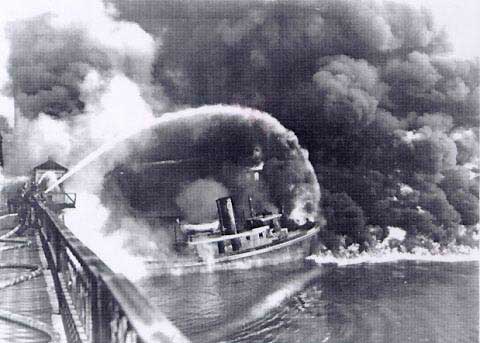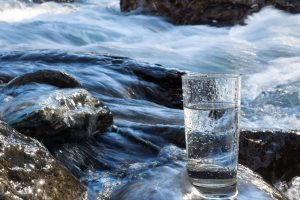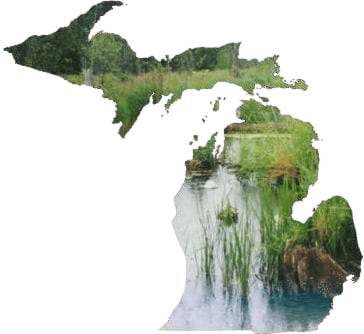History
The history of the Clean Water Act begins with its predecessor, the Federal Water Pollution Control Act of 1948, which was the first major law to address water pollution in the United States. Administered by the U.S. Environmental Protection Agency (EPA), this law created a set of comprehensive water quality programs and provided some financing to state and local governments.
The 1960’s had been marked by some truly horrific revelations regarding water pollution. A 1968 survey revealed that pollution in the Chesapeake Bay resulted in millions of dollars of lost revenue for fisherman, while a 1969 study found that bacteria levels in the Hudson River to be at 170 times the legal limit. The same year, pollution from local food processing plants killed 26 million fish in one lake in Florida, the largest fish kill on record, and an oil slick resulted in an infamous fire on the Cuyahoga River near Cleveland.

After centuries of reckless treatment of American rivers, streams, lakes and bays, the Clean Water Act became law on October 18, 1972. This landmark act instituted strict regulations on pollution and quality controls for the nation’s waters for the first time in its history.
The 1972 legislation declared as its objective the restoration and maintenance of the chemical, physical, and biological integrity of the nation’s waters. Two goals also were established: zero discharge of pollutants by 1985 and, as an interim goal and where possible, water quality that is both “fishable” and “swimmable” by mid-1983. While those dates have passed, the goals remain, and efforts to attain them continue.
Prior to the 1987 amendments, programs in the Clean Water Act were primarily directed at point source pollution, wastes discharged from discrete and identifiable industrial and municipal sources, such as pipes and other outfalls. The 1987 amendments authorized measures to address other pollution by directing states to develop and implement nonpoint pollution management programs (Section 319 of the Act).
Over the years, many other laws have changed parts of the Clean Water Act. Title I of the Great Lakes Critical Programs Act of 1990, for example, put into place parts of the Great Lakes Water Quality Agreement of 1978, signed by the U.S. and Canada, where the two nations agreed to reduce certain toxic pollutants in the Great Lakes. That law required EPA to establish water quality criteria for the Great Lakes addressing 29 toxic pollutants with maximum levels that are safe for humans, wildlife, and aquatic life. It also required EPA to help the states implement the criteria on a specific schedule.
The core Clean Water Act provisions include:
- National Pollution Discharge Elimination Permits: Prohibits corporations, sewer plants, and others from using pipes, ditches, and similar conveyances to dump dangerous wastes, chemicals, and other pollution into water without a permit. This program is led primarily by states and tribe. (Section 402 Permits)
- Dredge and Fill Permits: Prohibits dredging and filling of waters for mining, pipelines, and other development without a permit. This program is led primarily by the U.S Army Corps of Engineers, except in Michigan where the State Michigan Department of Environment, Great Lakes, and Energy (EGLE) has assumed authority to administer the program. (Section 404 Permits)
- State and Tribal Backstops: Allows states and tribes to evaluate federal permits involving pollution discharges to ensure they protect water quality (Section 401 Certification).
- Technology Forcing and Water Quality Based Pollution Standards: Requires permits to include pollution controls, limits, and monitoring that protect public health and water quality needed for drinking water, fisheries, swimming, wildlife, shellfish, farming, and other uses. (Water Quality Standards and Effluent Limits).
It is hard to overstate how critical the Clean Water Act was and is in reducing the amount of pollution flowing into our rivers, lakes, streams, and wetlands. Despite this, the Clean Water Act has been under attack for decades.



“Waters of the United States”
The text of the Clean Water Act states that the law protects “The Waters of the United States (WOTUS).” For more than thirty years, courts and previous administrations have interpreted a broad scope of jurisdiction for this phrase to include essentially all natural bodies of water: streams, wetlands, rivers, lakes and coastal areas, as well as water supply reservoirs. But two Supreme Court decisions in 2001 (SWANCC) and 2006 (Rapanos) left protections for smaller streams and several wetlands in limbo. These rulings and subsequent agency guidance left many waters not being sufficiently protected, as well as confusion, delays, and wasted resources within the regulated community and among the agencies making jurisdictional determinations and enforcing the Clean Water Act.
During the past three presidential administrations, EPA and the USACE have issued multiple rules defining WOTUS. In 2015, the EPA and U.S. Army Corps of Engineers (USACE) amended their regulations defining “waters of the United States” to clarify which streams, wetlands, and other waters are protected, but this was met with significant opposition. As a result, the 2015 Clean Water Rule was repealed and replaced with a 2019 Rule. Again, several challenges were filed and this rule was vacated by the court, halting its implementation. A final “Revised Definition of the ‘Waters of the United States’” rule took effect on March 20, 2023.
However, on May 25, 2023, the Supreme Court ruled against the EPA in a decision to place new limits on the Clean Water Act that could have major implications on the health of America’s waterways for years to come.
Sackett v. U.S. Environmental Protection Agency was about whether or not Mike and Chantell Sackett needed a federal permit to fill in the “wetlands” on their property. After the Sacketts bought property in Idaho, they began backfilling the lot with sand and gravel to prepare for building a home. The EPA said they were in violation of the Clean Water Act that prohibits discharging pollutants into “the waters of the United States.”
In this case, a majority of Supreme Court justices decided Congress only intended for wetlands with a “continuous surface connection” to a navigable body of water to be federally regulated. Further, they required these wetlands to be “indistinguishable” from the navigable body of water.
In compliance with the recent Supreme Court ruling, the EPA revised the rule defining U.S. waters. The federal agency estimates that 63 percent of the nation’s wetlands will be left without federal protections due to the Supreme Court ruling. Additionally, up to 4.9 million miles of streams will lose federal protections to prevent contamination.
This court ruling threatens the EPA and USACE’s ability to meet the mandate of the Clean Water Act and ignores decades of scientific evidence showing the interconnectedness of aquatic ecosystems.
Congress should and must act to ensure that the Clean Water Act can meet the mandate of the law to restore and maintain the chemical, physical and biological integrity of the United States’ waters and preserve drinkable, fishable and swimmable waters that support a wide variety of life.
Michigan under WOTUS
Without current protection under federal law, it will fall to state agencies to protect our wetlands and streams. Thankfully, Michigan has been somewhat buffered from the uncertainty and lack of protections that has resulted from Supreme Court decisions and agency guidance.
Michigan is one of just a few states that administers Section 404 of the Clean Water Act, based on state law. This means that the regulation of dredge and fill activities is carried out by the Michigan Department of Environment, Great Lakes, and Energy, with the exception of the Great Lakes shoreline where the federal government retained authority.
In order to keep authority to administer Section 404, Michigan must maintain a program that is equivalent to the federal program. If Michigan’s wetland program fails to be consistent with or is weaker than federal law (which it has been deemed to be by the EPA), the program could return to the federal government if the deficiencies with the state program are not corrected.

Under the current guidance in effect, Michigan would stand to lose a significant amount of our water resources if the 404 program reverted to the federal government. An estimated 930,856 acres of wetlands in the state, along with 26,384 lakes and ponds, could be considered “isolated” waters – water bodies that are particularly vulnerable to losing Clean Water Act safeguards. Additionally, according to an evaluation of the National Hydrography Dataset, 36 percent of the streams in Michigan are intermittent or ephemeral, which means these streams would no longer be protected.
It is vital to improve rules and regulations on the federal level while remaining vigilant on the state level to ensure our water resources are protected.





